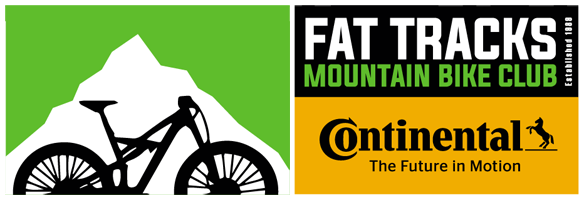The Robert Ledger Searle Wildflower Reserve
Apparel
FatTracks Q2 ➡️ Latest news, ride pics and future plans!
Article by: Graham Taylor – Chairman: Historical Society of Port Elizabeth
Way back in 1989, FatTracks had just started, and it was all about racing. You bought your bikes from Beachbreak, and Neil Dorwood, Gavin Vos, Robbie Powell, and Brandon Els were the go-to guys! At the time, the idea of mountain bike trails in the City was non-existent. But, a dedicated trails sub-committee, called Eco-MTB, was formed by FatTracks.
The first 20km trail was established in December 1995 in partnership with the Municipality. Dr Paul Martin from the Parks Department and Tess Kotze, Theuns Kotze (the Gary Fischer of PE Mountain Biking) and Graham Taylor built the first trail in the City. The trail started at Dodds Farm, followed the existing trail below the Little Walmer Golf Course, and used the Robert Ledger Searle Wildflower Reserve (if anybody knows where the “Ledger” part comes from – please let me know).

The Robert Searle Park was first established in the late 1950s
A park was first mooted in 1950 by FA Longworth, author of the definitive history of Walmer. Longworth spent a lifetime of recreational use in the valley and “dreamt how one day these valleys could be the playground for our environmentalists, our nature lovers and our country-loving youth”.
As a town councilor, Longworth had tried to have an open space declared on the section of Walmer Commonage between the Baakens and Klein Kabega River. But, the idea was opposed by his lifelong bowling friend, Robert Searle.
Civil society organizations, such as the Historical Society of Port Elizabeth, and the Eastern Province Wild Flower Society, continued to lobby for a Wildflower Reserve. Eventually it was supported by Robert Searle and the reserve was declared in the 1960s to preserve the unique wildflowers.

In 1995, the reserve was covered with dense stands of alien vegetation
It was difficult to believe that any wildflowers existed! When the first trails were cut, the area was covered with impenetrable stands of Port Jackson (Acacia saligna). The only way through was with a chain saw. Later, with the support of FatTracks proposals, the municipality raised funds for alien clearing and the entire reserve was cleared, and more trails were established. Slowly, the fynbos started coming back, the number of mountain bike trails increased, but alien vegetation remained a problem for the wildflowers.


The breakthrough came when three volunteer alien hackers adopted the area
They’re all retired and for the past 10 years, they’re at Robert Searle Park, chopping out aliens – religiously – once a week. The results have been spectacular.
Adriaan Grobler’s excellent conservation assessment of the Baakens River Valley says it all. There are only three areas in the Baakens supporting high numbers of species of conservation concern, and Robert Searle Park is one of them. Twelve of the eighteen Baakens species of conservation concern occur on Robert Searle Park.
The Baakens River Valley is of significant conservation importance and the degradation of habitat from human development and alien vegetation are the primary threats.

Found in a small area of the Eastern Cape, South Africa. According to the South African National Biodiversity Institute, it is critically endangered.
Agathosma gonaquensis or the Gonaqua Buchu, is a good example
Buchu is widely used medicinally, and before the arrival of the 1820 settlers, the Gonaqua Buchu was used by indigenous people as an infusion for hay fever and colds. It has a range of other uses and was named following observations from the botanists Ecklon and Zeyher in about 1830. At the time, the plant was widespread across Port Elizabeth landscapes, but, urban development and alien invasive species fragmented its habitat and now its critically endangered – confined to just a few places – one of them right next to the mountain bike trail on Robert Searle Park!

from https://www.nmbt.co.za/uploads/1/files/doc_port_elizabeth_map.pdf
The lessons are significant
The fact that the Gonaqua Buchu is still found on Robert Searle is a direct consequence of recreational mountain biking. The fact that it’s thriving, is through the consistent efforts of a small group of volunteers in clearing alien vegetation.
With that comes great responsibility. Human impacts increase as we use areas more intensively, and mountain biking can conserve or destroy. We owe it to everybody, to increase our conservation efforts and mitigate our impacts.

Join us for a guided walk through the valley
In July, the Botanical Society, Dendrological Society, Historical Society of Port Elizabeth, and FatTracks will undertake a walk on Robert Searle, to talk and learn about alien eradication, botany, history, trail etiquette, trail maintenance, and trees.
Details below:



